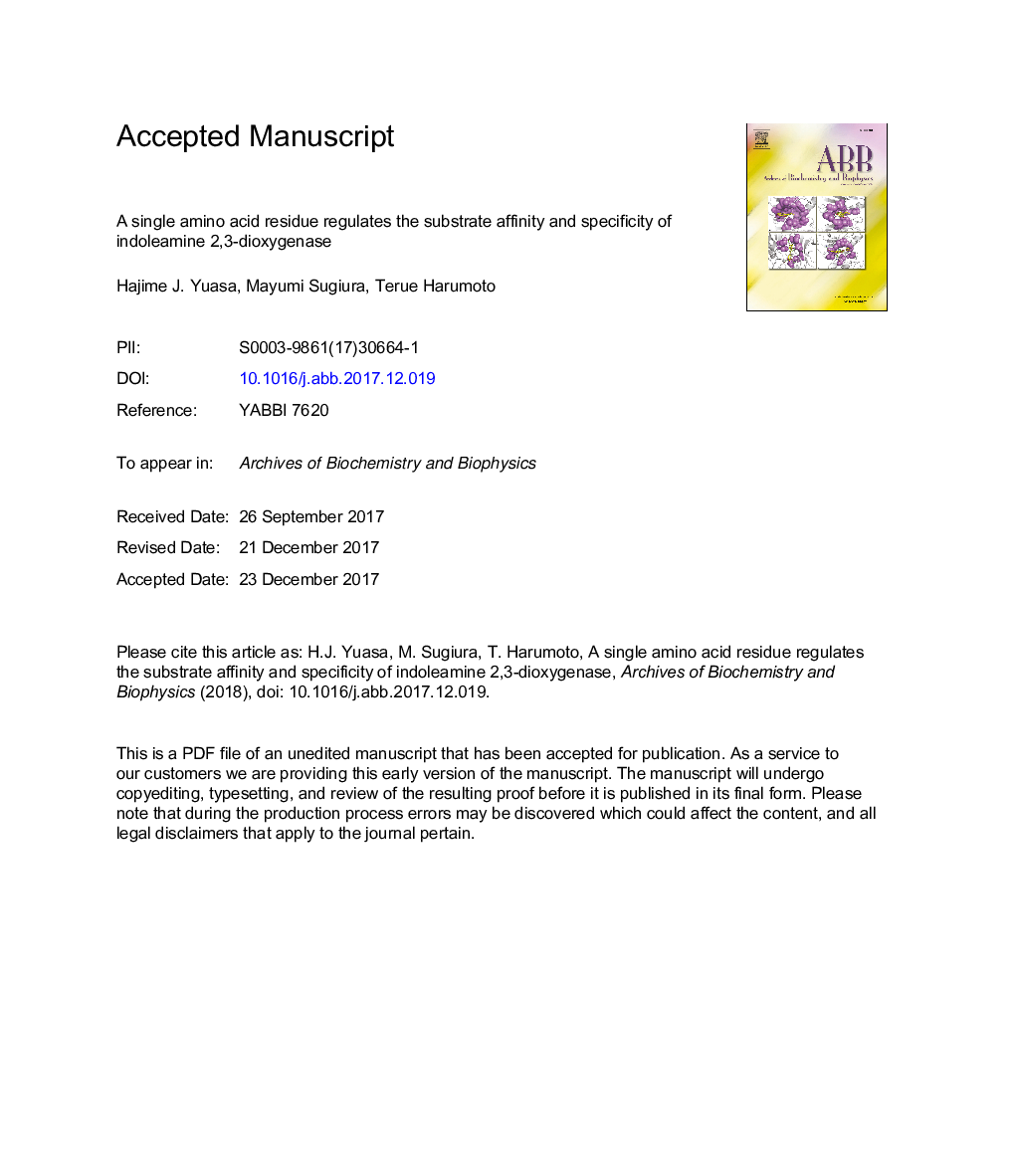| Article ID | Journal | Published Year | Pages | File Type |
|---|---|---|---|---|
| 8288763 | Archives of Biochemistry and Biophysics | 2018 | 35 Pages |
Abstract
Indoleamine 2,3-dioxygenase (IDO) is a heme-containing enzyme that catalyses the oxidative cleavage of L-Trp. The ciliate Blepharisma stoltei has four IDO genes (IDO-I, -II, -III and -IV), which seem to have evolved via two sequential gene duplication events. Each IDO enzyme has a distinct enzymatic property, where IDO-III has a high affinity for L-Trp, whereas the affinity of the other three isoforms for L-Trp is low. IDO-I also exhibits a significant catalytic activity with another indole compound: 5-hydroxy-l-tryptophan (5-HTP). IDO-I is considered to be an enzyme that is involved in the biosynthesis of the 5-HTP-derived mating pheromone, gamone 2. By analysing a series of chimeric enzymes based on extant and predicted ancestral enzymes, we identified Asn131 in IDO-I and Glu132 in IDO-III as the key residues responsible for their high affinity for each specific substrate. These two residues were aligned in an identical position as the substrate-determining residue (SDR). Thus, the substrate affinity and specificity are regulated mostly by a single amino acid residue in the Blepharisma IDO-I and IDO-III enzymes.
Related Topics
Life Sciences
Biochemistry, Genetics and Molecular Biology
Biochemistry
Authors
Hajime J. Yuasa, Mayumi Sugiura, Terue Harumoto,
